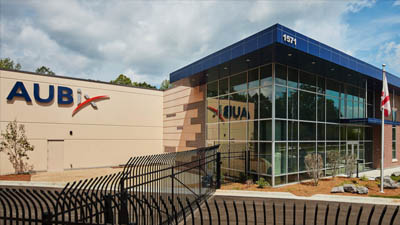What is network fabric, and is it the same as a campus fabric?
A data center network fabric is applications-centric. A campus fabric is user-centric—it improves your ability to support users working, learning or living on a campus.
A network fabric sounds kind of cozy, doesn't it? Like wrapping yourself in a warm, woven blanket on a cold day. Actually, that’s not a bad comparison. A fabric topology knits individual switches together so they behave like one switch. But you still maintain the flexibility of individual switches and stacks.
Fabric networking can give you a warm, comfortable feeling in a lot of ways: the fabric makes it easy to manage lots of switches. Data can take different paths through the switching ports of the fabric. And switches can take over for each other if a fellow fabric switch has problems.
The use of fabrics in campus networks is relatively new. So there may be some confusion about whether they’re the same as a network fabric. Or switching stack. Or switching chassis. No, no and no.
So what are the distinctions of the campus fabric?
The user-centric purpose of a campus fabric vs. a network fabric
Fabric networks have been used in data centers for years. You may hear people using campus and network fabrics interchangeably. They do have things in common, but their purposes are very different.
A data center network fabric is applications-centric. A campus fabric is user-centric—it improves your ability to support users working, learning or living on a campus. And those needs are primarily fast, easy and uninterrupted access to the network using wireless devices. A campus fabric makes it easier for IT to meet these needs. We’re talking leaps and bounds easier.
How Ruckus ICX Switches are woven into a campus fabric
Campus fabrics weave together switches. We’ll skip the switch definition—if you have switches in your network, you know what they do. But we should distinguish between standalone and stacked switches.
On second thought, let’s not bother with that, either. Ruckus ICX Switches can be used standalone, stacked or woven into a campus fabric. We don’t make special fabric switches or designate special fabric ports on switches. All ICX switches are created fabric-enabled.
You can make any Ruckus switch part of the fabric. Plug in a switch and it automatically associates itself with the fabric. Take a switch out of the fabric and it happily returns to its non-fabric state. The switches in a campus fabric come and go as you please.
As part of a campus fabric, switches have one of two roles. Every fabric needs a Control Bridge. That’s not a special piece of hardware or software—it’s a function you enable. Essentially, the switch or switches (for resiliency) designated as a Control Bridge now become the brains of the fabric. You manage the fabric through that brain. The other switches in the fabric are now called Port Extenders. Not as sexy as the brain, but it kind of captures how switching ports become extensions of the brain.
So how does a campus fabric make things so much easier for your IT team? Remember we talked about stacks vs. fabrics? Each stack has its own IP address. As part of a fabric, all of the stacks share one IP address. It doesn’t even matter where the switches are located or what their job is. The fabric unifies.
A campus fabric is self-healing, which means that other switches will take over if a switch is removed or disabled. A fabric is self-forming, which means a new switch knows its role in the fabric, and inherits all of the features and policies it needs.
In many ways, a campus fabric provides the capabilities of a chassis. However, in practice, a chassis is an expensive way to unify switching ports. You can’t make use of your existing switches. Instead, you need line cards that plug into the chassis. You can’t distribute those line cards around floors or buildings. You’ll probably buy capacity you don’t need just to make sure that the expensive chassis can support a lot of growth. In short, you lose a lot of flexibility and pay more for the benefits of unity.
That’s why the campus fabric is like a warm, comfy blanket for users. And IT, too.














